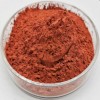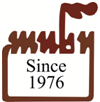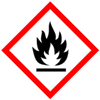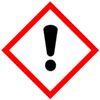Copper Dust or Copper Powder BP Ph Eur & Analytical Reagent Grade Manufacturers, with SDS GHS MSDS Sheet |
Supplier, Manufacturer, Exporter of Copper Dust or Copper Powder BP Ph Eur and Analytical Reagent Grade, Muby Chemicals of Mubychem Group, established in 1976, is the original manufacturers of Specialty Chemicals, Pharmaceutical Excipient, Fragrance Food & Flavor chemicals, Reagent Grade Chemicals, Shale Gas Fracturing Chemicals in India. Mubychem Group has several manufacturing facilities spread across Western India and world wide contacts and toll manufacturers. We are exporting globally to countries like USA, Canada, Europe, UAE, South Africa, Tanzania, Kenya, Egypt, Nigeria, Cameroon, Uganda, Turkey, Mexico, Brazil, Chile, Argentina, Dubai, Korea, Vietnam, Thailand, Malaysia, Indonesia, Australia, China, Germany, France, Italy Portugal, Bangladesh, etc. The products are offered as per required specifications and in correct shape and size in mm or meshs or microns as specified by the buyer. The participating units have one or more accreditations like FDA - cGMP and GLP approval, ISO-9001 Certified, "REACH" Registered, ISO-14001, ISO/IEC 17025, ISO-22000, FSSC 22000, ISO 45001, Kosher Certified, Halal Certified, HACCP, FSSAI. We offer Commercial Pure & IP BP EP Ph Eur USP NF JP FCC Food Grade Analytical Reagent Grades of Chemicals |
| Bookmark this Web Site -- or -- Email This Page Info to a Colleague or Yourself |
Search our website here:







Copper Dust or Copper Powder CAS Number 7440-50-8, EINECS EC Number: 231-159-6, Molecular Formula: Cu, Atomic Weight: 63.55, HS Code 74061000
How big is your requirement or how small
We serve it all.
Specifications, Safety Data Sheet, Manufacturing process details, Wholesale retail buy sell prices, Uses etc available on line in these pages for Copper Dust or Copper Powder.
For SDS MSDS Sheet Click
SDS MSDS Sheet of Copper Powder Manufacturers
Copper Powder
Copper Dust or Pure BP Ph Eur Analytical Reagent GradeSuppliers

General Properties and Specifications of Copper Dust or Copper Powder:
Characters: Copper fine powder.
Assay by chemical: Not less than 99%
Loss on drying: Not more than 0.2%
Loss on reduction: Not more than 0.3%
Mesh: 100% pass on 200 Mesh.
Flow rate: 26 to 30 Sec.
Bulk density: Around 5.2 g/cc.
Relative density: about 8.94
Melting Point: 1083C literature.
Boiling Point: 2567C literature.
Copper for Homoeopathic Preparations BP Ph Eur Grade Specifications:
Cu -- 63.5 CAS 7440-50-8
DEFINITION
Content: 98.0 per cent to 102.0 per cent of Cu.
CHARACTERS
Appearance: Reddish-brown powder.
Solubility: Practically insoluble in water. Soluble in nitric acid. Practically insoluble in ethanol (96 per cent).
IDENTIFICATION
A. To 2 mL of solution S (see Tests) add 0.5 mL of potassium ferrocyanide solution. A reddish-brown precipitate is formed.
B. To 5 mL of solution S add 0.6 mL of ammonia. A blue precipitate is formed. Add 2 mL of ammonia. The precipitate disappears; the solution has an intense blue colour.
TESTS
Solution S: Dissolve 2.0 g in 10 mL of nitric acid. After nitrous fumes are no longer evolved, dilute to 60 mL with distilled water.
Acidity or alkalinity: To 5.0 g add 20 mL of carbon dioxide-free water. Boil for 1 min. Cool. Filter and dilute to 25.0 mL with carbon dioxide-free water. To 10 mL of the solution add 0.1 mL of bromothymol blue solution. No more than 0.5 mL of 0.01 M hydrochloric acid or 0.01 M sodium hydroxide is required to change the colour of the indicator.
Chlorides: Maximum 100 ppm, determined on solution S.
Sulfates: Maximum 300 ppm, determined on solution S.
Atomic absorption spectrometry: To meet the requirement.
Iron: Maximum 50 ppm.
Lead: Maximum 100 ppm.
Zinc: Maximum 50 ppm.
Copper Analytical Reagent Grade Specifications:
Cu -- Atomic Weight 63.55
CAS Number 7440-50-8
REQUIREMENTS
Assay: 99.90% Cu.
MAXIMUM ALLOWABLE
Insoluble in dilute nitric acid: 0.02%
Antimony and tin (as Sn): 0.01%
Arsenic (As): 5 ppm.
Iron (Fe): 0.005%
Lead (Pb): 0.005%
Manganese (Mn): 0.001%
Silver (Ag): 0.002%
Phosphorus (P): 0.001%.
For Original Monographs of IP Indian Pharmacopoeia EP Ph Eur European Pharmacopoeia BP British Pharmacopoeia USP US Pharmacopoeia FCC Food Grade product, please check with the respective web-pages or books.
We also manufacture and supply as under:
Manufacturers:
MUBY CHEMICALS
Ambernath Mumbai, Ankleshwar Gujarat, India
TEL: (OFFICE) +912223770100, +912223726950
Current Date Time in India GMT+5:30
e-mail: info@mubychem.com
USA, Canada, Mexico and other American neighbouring buyers may
e-mail: us@mubychem.com
Call toll-free 1-877-682-9243 (1-877-MUBYCHEM)

Copyright and Usual Disclaimer is Applicable.
Last 23 November, 2025




Exporters to USA Canada UAE Europe South Africa Tanzania Kenya Uganda Egypt Nigeria Turkey Mexico Brazil Argentina Chile Dubai etc.
Global or International Suppliers, Exporters, Importers, Manufacturers
I shall pass through this world, but once. If therefore, there is any good that I can do, or if there is any favor that I can show to a fellow human being, let me do it now. Let me not defer or neglect it. For I shall not tread this way again
Copper Dust or Copper Powder SDS, Safety Data Sheet
MSDS, Material Safety Data Sheet 01-Jun-24
SECTION 1. PRODUCT IDENTIFICATION
Product Name & Other Names: Copper Dust or Copper Powder.
CAS Number: 7440-50-8
EINECS EC Number: 231-159-6
Molecular Formula: Cu
Atomic Weight: 63.55
Relevant uses and uses advised against (if any): Industrial Manufacturing.
Supplier: As per the letterhead.
SECTION 2. HAZARDS IDENTIFICATION
GHS, Globally Harmonized System Classification in accordance with 29 CFR 1910
Classification according to Regulation (EC) No 1272/2008
Flammable solids (Category 1), H228
Skin irritation (Category 2), H315
Serious eye damage/eye irritation (Category 2B) H319
Labeling according to GHS USA & Regulation (EC) No 1272/2008
GHS Label Elements  Flammable Solids | GHS Label Elements  Irritant |
Signal Words: Danger
Hazard statements:
H228: Flammable solid.
H315: Causes skin irritation.
H319: Causes serious eye irritation.
Precautionary statements:
P210: Keep away from heat/sparks/open flames/hot surfaces – No smoking.
P240: Ground/bond container and receiving equipment.
P241: Use explosion-proof electrical/ventilating/light/…/equipment.
P261: Avoid breathing dust/ fume/ gas/ mist/ vapors/ spray.
P262: Do not get in eyes, on skin, or on clothing.
P270: Do not eat, drink or smoke when using this product.
P271: Use only outdoors or in a well-ventilated area.
P280: Wear protective gloves/protective clothing/eye protection/face protection.
P330: Rinse mouth.
P301+P312: IF SWALLOWED: Call a POISON CENTER or doctor/physician if you feel unwell.
P302+P352: IF ON SKIN: Wash with soap and water.
P304+340: IF INHALED: Remove victim to fresh air and keep at rest in a position comfortable for breathing.
P305+P351+P338: IF IN EYES: Rinse cautiously with water for several minutes. Remove contact lenses, if present and easy to do. Continue rinsing.
P370+378: In case of fire: Use water spray, alcohol-resistant foam, dry chemical, or carbon dioxide for extinction.
Classification according to European Directive 67/548/EEC as amended:
Hazard symbol:
F Flammable
Xi Irritant.
R-phrases:
R22 Harmful if swallowed.
R36/38 Irritating to eyes and skin.
SECTION 3. COMPOSITION / INFORMATION ON INGREDIENTS
Product Name & Other Names: Copper Dust or Copper Powder.
CAS Number: 7440-50-8
EINECS EC Number: 231-159-6
SECTION 4. FIRST AID MEASURES
Always seek medical attention after first aid measures are provided.
Eye Contact: Do not allow victim to rub eyes. Let the eyes water naturally for a few minutes. If particle/dust does not dislodge gently flowing water for 5 minutes or until particle/dust is removed, while holding eyelid open. If irritation persists, obtain medical attention. DO NOT attempt to manually remove anything stuck to the eye.
Skin Contact: Remove contaminated clothing, shoes, and leather goods (e.g., watchbands, belts). Quickly and gently blot or brush away excess chemicals. Wash gently and thoroughly with gently flowing water and non-abrasive soap for 5 minutes. If irritation persists, repeat flushing. Obtain medical advice.
Inhalation: Remove source of contamination or move victim to fresh air. Obtain medical advice.
Ingestion: Never give anything by mouth if victim is rapidly losing consciousness or is unconscious. Have the victim rinse their mouth thoroughly with water. DO NOT INDUCE VOMITING.
Notes to Physician: Treat symptomatically.
SECTION 5. FIRE FIGHTING MEASURES
Fire and Explosion Hazards: Flammable Solids.
Extinguishing Media: Use means of extinction appropriate for the surrounding fire conditions such as water spray, carbon dioxide, dry chemical, or foam.
Fire Fighting: Toxic fumes may result from combustion. As with any fire, fire fighters should be fully trained and wear full protective clothing including an approved, self-contained breathing apparatus which supplies a positive air pressure within a full-face piece mask. Avoid water solid stream directly on material. Do not allow water run-off to enter sewers or watercourses. Use water spray to cool unopened containers.
Special Information: In the event of a fire, wear full protective clothing and NIOSH-approved self-contained breathing apparatus with full face piece operated in the pressure demand or other positive pressure mode. At high temperatures under fire conditions, it may produce toxic or irritating fumes.
SECTION 6. ACCIDENTAL RELEASE MEASURES
Personal precautions, protective equipment, and emergency procedures: Avoid breathing dust/fumes/gas/mist/vapors/spray. Use individual protective equipment (waterproof boots, suitable protective clothing, safety glasses, etc.). Restrict unprotected personnel from the area. Prevent any contact with hot surfaces. Do not approach facing the wind. Do not touch the spilled material.
Environmental precautions: Do not let the product enter drains, soil, or water sources.
Methods and materials used for containment cleanup procedures and Storage: Do not inhale dust, vapors, mist, or gas. Avoid dust formation. Contain spilled material. Cover with an inert, non-combustible absorbent material, (e.g., sand, earth, diatomaceous earth, vermiculite). Use a shovel to put the material into a convenient waste disposal container. Finish cleaning by spreading water on the contaminated surface and allow to evacuate as per law.
Special hazards arising from the substance or mixture: Nitrogen oxides, carbon oxides, chlorine compounds, and fumes.
SECTION 7. HANDLING AND STORAGE
Precautions for safe handling: Apply according to good manufacturing and industrial hygiene practices. Ensure proper ventilation. In case of insufficient ventilation, wear suitable respiratory equipment. Wash thoroughly after handling. Do not drink, eat, or smoke while handling. Avoid contact with skin, eyes, and clothing. Minimize dust generation. Avoid breathing dust/fumes/gas/mist/vapors/spray. Keep container tightly closed. Avoid ingestion and inhalation. Use individual protective equipment (waterproof boots, suitable protective clothing, safety glasses, etc.). Prevent any contact with hot surfaces.
Conditions for safe storage, including any incompatibilities: Store in cool, dry, and ventilated area away from heat sources and protected from sunlight in tightly closed original container. Keep air contact to a minimum. Store protected from heat, sparks and ignition sources and incompatible materials. Avoid contact with skin and eyes. Avoid inhalation of dust/mist/vapor. Do not store with incompatible materials like strong oxidizing agents. Keep away from sources of ignition - No smoking. Take measures to prevent the build-up of electrostatic charge. Refrain from eating, drinking, or smoking in work areas.
SECTION 8. EXPOSURE CONTROLS / PERSONAL PROTECTION
Control Parameters:
USA ACGIH TLV: TWA: 0.2 mg/m3
USA OSHA PEL: (Vacated) TWA: 0.1 mg/m3.
Ventilation System: A system of local and/or general exhaust is recommended to keep employee exposures as low as possible. Local exhaust ventilation is preferred because it can control the emissions of the contaminant at its source, preventing dispersion of it into the general work area.
Personal Respirators (NIOSH Approved): For conditions of use where exposure to dust or mist is apparent and engineering controls are not feasible, a particulate respirator may be worn. For emergencies or instances where the exposure levels are not known, use a full-face positive-pressure, air-supplied respirator.
Skin Protection: Wear protective gloves and clean body-covering clothing.
Eye Protection: Use chemical safety goggles and/or full-face shield where dusting or splashing of solutions is possible. Maintain eye wash fountain and quick-drench facilities in work area.
Other Control Measures: Maintain good housekeeping in work area. Handle in accordance with good industrial hygiene and safety practice. Wash hands after handling.
SECTION 9. PHYSICAL AND CHEMICAL PROPERTIES
Appearance: Copper reddish-brown fine powder.
Odor: Not available.
Odor threshold: Not available.
pH: Not available.
Relative density: about 8.94
Melting point/freezing point: 1083C literature.
Initial boiling point and boiling range: 2567C literature.
Flash point: Not available.
Auto-ignition temperature: Not available.
Decomposition temperature: Not available.
Upper/lower flammability or explosive limits: Not available.
Vapor pressure: Not available.
Vapor density: Not available.
Evaporation rate: Not available.
Flammability (solid, gas): Not available.
Partition coefficient: n-octanol/water: Not available.
Solubility in Water: Practically insoluble in water.
Viscosity: Not available.
Molecular Formula: Cu
Atomic Weight: 63.55
SECTION 10. STABILITY AND REACTIVITY
Stability and Reactivity: It is stable and not considered reactive under normal temperatures and pressures. Hazardous polymerization or runaway reactions will not occur.
Incompatibilities: Strong Oxidizing agents. Moisture sensitive. Air sensitive.
Hazardous Decomposition Products: High temperature operations will generate Copper oxides.
Conditions to Avoid: Heat, flames, and sparks.
SECTION 11. TOXICOLOGICAL INFORMATION
Acute Toxicity Oral: Not available.
Carcinogenicity: IARC: No component of this product present at levels greater than or equal to 0.1% is identified as probable, possible, or confirmed human carcinogen by IARC.
Mutagenic Effects: Not available.
Teratogenic Effects: Not available.
Developmental Toxicity: Not available.
Other Adverse Effects: The toxicological properties have not been fully investigated.
SECTION 12. ECOLOGICAL INFORMATION
Eco toxicological data: Do not allow material to contaminate ground water system. Product contains heavy metals. Discharge into the environment must be avoided.
Toxicity to fish: Onchorhynchys mykiss: LC50=0.15 mg/L 96h.
Toxicity to daphnia and other aquatic invertebrates: Not available.
Results of PBT and vPvB assessment: Not available.
Persistence and Degradability: Not available.
Bioaccumulation/ Accumulation: No information available.
Mobility: Not available.
SECTION 13. DISPOSAL CONSIDERATIONS
Do not wash the material down drain. Put uncontaminated material back into the process if possible. Place contaminated material in suitable, labeled containers for disposal. Dispose of waste material consistent with the requirements of waste disposal authorities.
SECTION 14. TRANSPORT INFORMATION
DOT USA &ADR/RID Europe:
UN Number: UN3089
UN proper shipping name: Metal powder, flammable, n.o.s. (Copper)
Transport hazard class(es): 4.1; Packaging group: III.
IATA:
UN Number: UN3089
UN proper shipping name: Metal powder, flammable, n.o.s. (Copper)
Transport hazard class(es): 4.1; Packaging group: III.
IMDG:
UN Number: UN3089
UN proper shipping name: Metal powder, flammable, n.o.s. (Copper)
Transport hazard class(es): 4.1; Packaging group: III.
SECTION 15. REGULATORY INFORMATION
USA Regulations:
SARA 311/312 Hazards: Fire Hazard, Acute Health Hazard
California Prop. 65 Components: This product does not contain any chemicals known to the State of California to cause cancer, birth defects, or any other reproductive harm.
SECTION 16 - ADDITIONAL INFORMATION
European Labeling in Accordance with EC Directives:
H228: Flammable solid.
H315: Causes skin irritation.
H319: Causes serious eye irritation.
Classification according to European Directive 67/548/EEC as amended:
Hazard symbol:
F Flammable
Xi Irritant.
R-phrases:
R22 Harmful if swallowed.
R36/38 Irritating to eyes and skin.
Disclaimer:
**************************
Our company provides this MSDS sheet in good faith but makes no representation as to its comprehensiveness or accuracy. This SDS sheet is intended only as a guide to the appropriate precautionary handling of the material by a properly trained person using this product. The above information has been compiled from various sources and has the possibility of discrepancy and being out-dated information. Individuals receiving the information must exercise their independent judgment and do further search in determining its appropriateness for a particular purpose. In no case shall our company be liable to loss or damages by the product user.
**************************
















